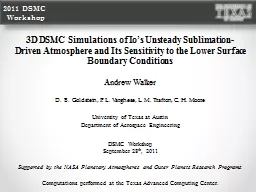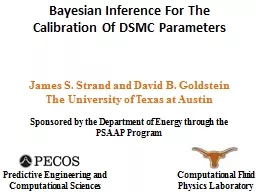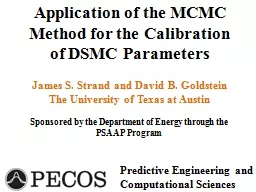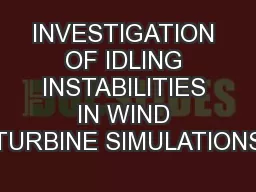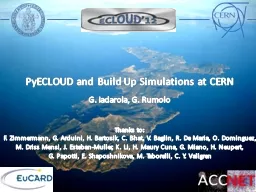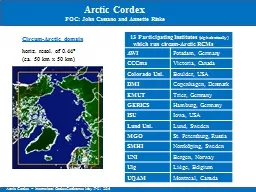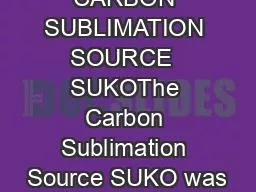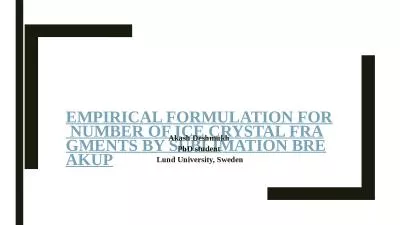PPT-3D DSMC Simulations of Io’s Unsteady Sublimation-Driven A
Author : kittie-lecroy | Published Date : 2016-07-22
Its Sensitivity to the Lower Surface Boundary Conditions Andrew Walker D B Goldstein P L Varghese L M Trafton C H Moore University of Texas at Austin Department
Presentation Embed Code
Download Presentation
Download Presentation The PPT/PDF document "3D DSMC Simulations of Io’s Unsteady S..." is the property of its rightful owner. Permission is granted to download and print the materials on this website for personal, non-commercial use only, and to display it on your personal computer provided you do not modify the materials and that you retain all copyright notices contained in the materials. By downloading content from our website, you accept the terms of this agreement.
3D DSMC Simulations of Io’s Unsteady Sublimation-Driven A: Transcript
Download Rules Of Document
"3D DSMC Simulations of Io’s Unsteady Sublimation-Driven A"The content belongs to its owner. You may download and print it for personal use, without modification, and keep all copyright notices. By downloading, you agree to these terms.
Related Documents

